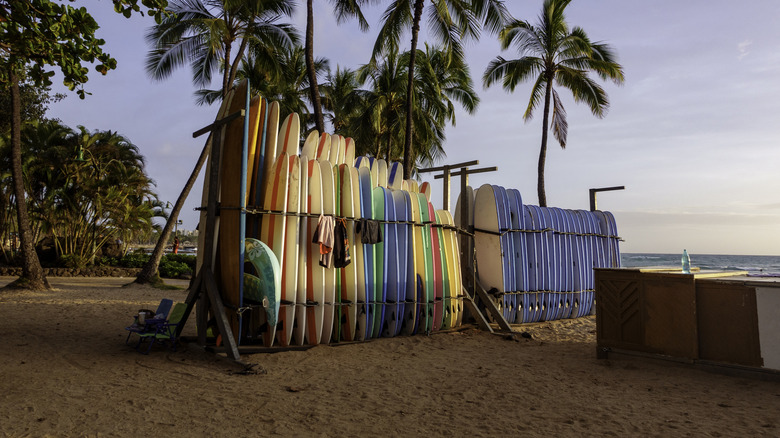
WalletHub’s 2025 “Best & Worst State Economies” study evaluated 28 indicators across all 50 states, plus Washington D.C. Hawaii ranks 49th overall, only ahead of West Virginia (50th) and Iowa (51st). The report indicates Hawaii is 47th in economic activity, last (51st) in exports per capita, 49th in innovation potential, and 50th in the share of high-tech jobs. However, the state excels in one people-focused indicator; it ranks 5th for the average educational attainment of recent immigrants, highlighting that newcomers arrive highly qualified. Hawaii also performs well in economic health, ranking 31st, largely due to tourism-driven income.
Hawaii’s Department of Business, Economic Development & Tourism (DBEDT) reports that visitors spent nearly $23.9 billion in 2023, which circulated through hotels, airlines, shops, and restaurants, generating approximately $14.3 billion in household labor income and supporting 234,757 jobs. This tourism-generated revenue helps explain why the 2022 American Community Survey lists Hawaii’s median household income at $98,317, comfortably exceeding the national median of $80,610 as reported by the U.S. Census Bureau in 2023.
Statista data also shows that only 10.1% of Hawaiians live below the poverty line, compared to the Census Bureau’s Supplemental Poverty Measure, which puts the nationwide rate at 12.4%. Still, the “Aloha State” hosts one of America’s most expensive retirement communities, ranks among the top five states with the highest electricity bills, and can be a costly state to reside in. It compensates, however, by being one of the few states with the highest average salary.
Geography: One of Hawaii’s Biggest Challenges

Hawaii is an island, so about 90% of everyday goods, such as food and fuel, must arrive by ship or plane. This extra leg of the journey adds to the final price consumers pay. In 2022, the Hawaii Senate passed Resolution SR 128, which cited the Water Carriers Working Group’s report stating shipping adds about 7.5% to consumer costs. Reflecting on the state’s own data, the DBEDT 2017 Input-Output Benchmark Study set the water-transportation margin at 1.75% for every $100 million in retail sales.
This means that for every $100 million Hawaii earns in retail, about $1.75 million of that total is allocated to pay for shipping costs necessary to transport those goods across the Pacific. The cost increases under the century-old Jones Act, which restricts cargo routes to U.S-built and U.S-crewed vessels. A July 2020 study by the Grassroot Institute of Hawaii found that the Act adds approximately $654 million annually in shipping costs, raising prices for Hawaiian consumers by $916 million, about $645 per person.
Tourism Masking Hawaii’s Fragile Economy

Hawaii welcomed over 9.6 million visitors in 2024, generating $20.68 billion in direct spending — a slight 0.2% decrease from the $20.73 billion recorded in 2023, according to the DBEDT January 2025 press release. This strong pace continued into 2025; Maui saw nearly 60,000 visitors daily in February. However, relying too heavily on these numbers overlooks the underlying issue. Hawaii’s economy is still largely dependent on tourism, an industry susceptible to changes due to fuel-price hikes, recessions, and unforeseen events like the Maui wildfires. Despite the influx of visitor cash, the state has not diversified its revenue streams into areas like technology or manufacturing.
Tourism and the military constitute significant portions of Hawaii’s economy. The former contributes approximately 23.6%, according to the DBEDT’s September 2023 briefing, while the latter accounts for 8.3% of Hawaii’s GDP, as indicated by the state-run defense economy portal. In contrast, technology represents just 2.2% and manufacturing only 1.6%, one of the lowest shares of any state per Hawaii’s Department of Business, Economic Development & Tourism April 2022 report. Because so much hinges on visitors and defense spending, Hawaii is vulnerable if either sector suffers a setback. Additionally, the influx of tourists also increases costs for locals. More demand for rooms and transport elevates rents and fares. While visitors may overlook the higher prices, residents are left dealing with these increases long after the tourists have departed.






